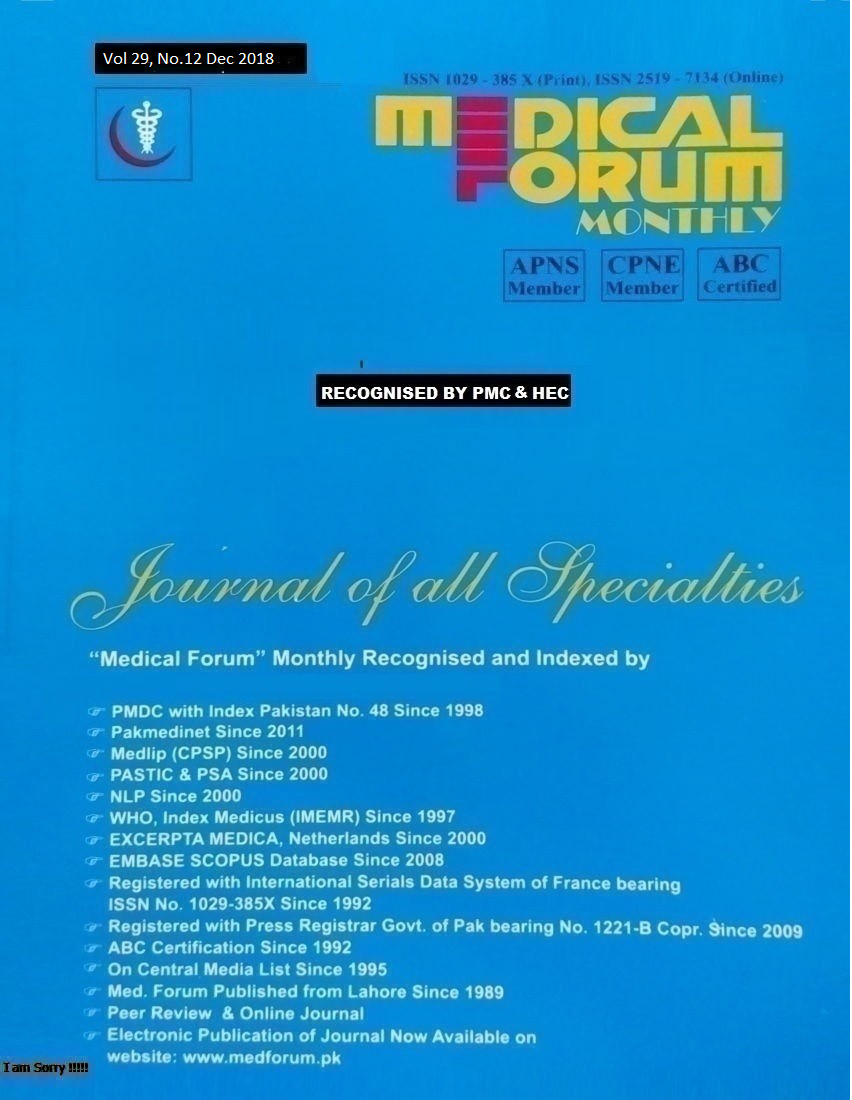
1. Frequency of Low Birth Weight Babies and Scio-Economic Status among the Mothers of Karachi
Tafazzul H Zaidi, Faheem Ahmed and Kiran Mehtab
ABSTRACT
Objective: To access the effects of Scio-economic factors on the low birth weight of the baby.
Study Design: Descriptive / cross sectional study
Place and Duration of Study: This study was conducted at the OPDs of National Institute of Child Health, Karachi from March 2018 to July 2018
Materials and Methods: The sample size of 104 mothers was drawn through non-probability purposive sampling technique. A self-administered structured questionnaire was constructed. Data was collected through the structured questionnaire. Pilot study was done to check the authenticity of questionnaire. Data was entered and analyzed on statistical package for social sciences (SPSS version 20) with 95% confidence interval and 5% margin of error. P-value less than 0.05 was considered statistically significant.
Results: 104 women who gave births to low weight babies participated in this research. All the women were multipara. 68.3% went through normal vaginal delivery. 72.1% women had monthly family income below 10,000 PKR. 30.8% of the women had 6 family members, it was found that women living in rural areas had more family members (72.8%) women living in rural areas had 10 or more family members. 43.3% had taken inter pregnancy interval of 1 year or less. 76% of the women delivered at hospital. 77.9% of the mothers were anemic during their pregnancy. When asked about any, 78.8% women had clinical visited during pregnancy. 58.9% of women did not increase their meals during pregnancy. 28.8% pregnant women took milk once in a week& 39.4% used to take milk once in a month. 53.8% of women used to eat meat once in a week and 31.8% consumed meat once in a month. 76.9% of women replied in negative for HTN, 96.2% of mothers replied in negative for diabetes and 90.4% didn’t had TB during last 2 years. 94.2% of women didn’t smoke. 40.4% of mothers had delivered low weight babies previously. Results showed that 68.3% women who gave birth to LBW baby were married at the age of 18 years or below. Results also showed that 77.9% were anemic during pregnancy. 51.9% women didn’t increase their meals during pregnancy. 62.5% women had consanguineous marriage.
Conclusion: A holistic approach is needed to address the issue of early marriages in our society and strong actions are needed to be taken to spread the awareness of good antenatal care in the mothers.
Key Words: low, birth, weight, economic, status, marriage, nutrition
Citation of articles: Zaidi TH, Ahmed F, Mehtab K. Frequency of Low Birth Weight Babies and Scio-Economic Status among the Mothers of Karachi. Med Forum 2018;29(12):2-5.
